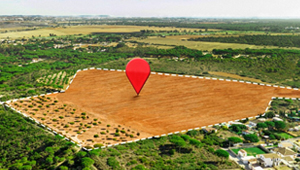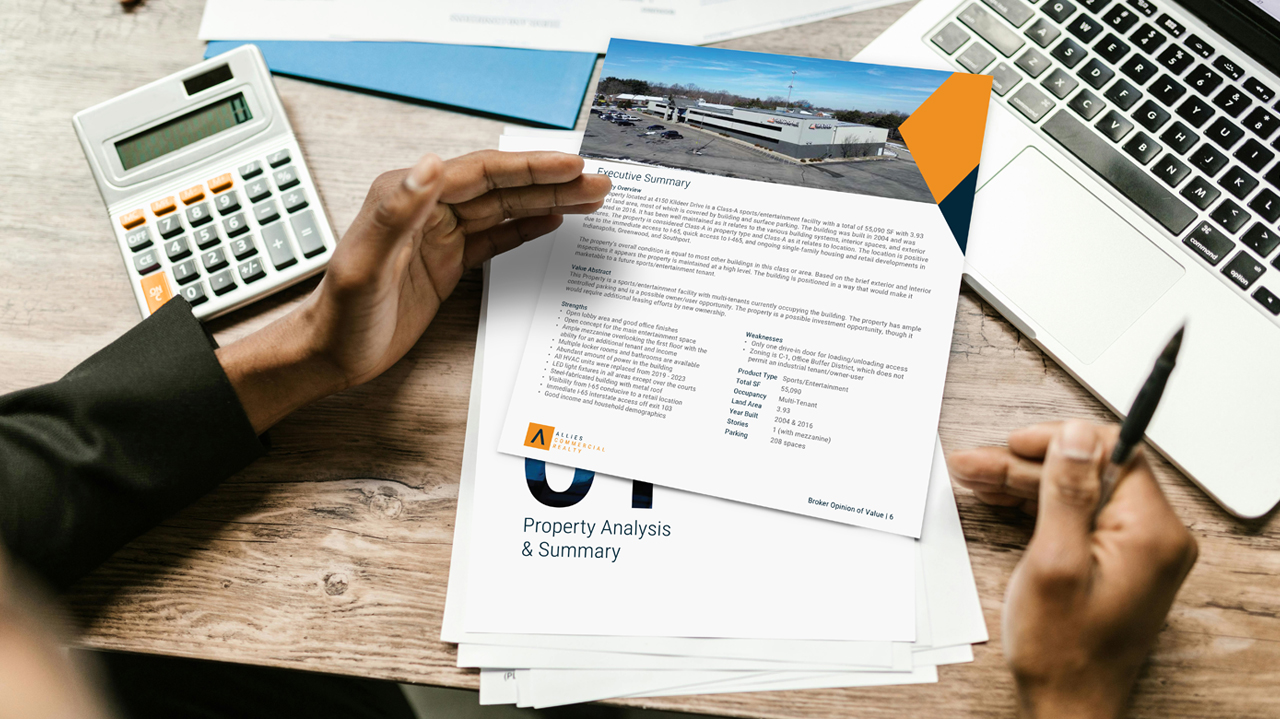The Impact of The US Presidential Race On Commercial Real Estate

The race to the White House is heating up, and while the headlines are buzzing with predictions, real estate insiders are paying close attention to how the election’s outcome will influence the future of the market. With Kamala Harris, the current Vice President, running for the presidency on the Democratic ticket, and Tim Walz, the Governor of Minnesota, as her running mate, their platform promises continuity with a focus on infrastructure, economic progress and environmental policies. On the Republican side, Donald Trump is making a political comeback, this time with JD Vance, the Senator from Ohio, by his side, championing deregulation, tax cuts and reformation of economic policies. Beyond the political maneuvers, major public influential figures have stepped into the political arena, with SpaceX CEO Elon Musk having publicly endorsed Donald Trump, while pop singer Taylor Swift has thrown her support behind Kamala Harris and the Democrats. As these influential voices enter the conversation, the stakes are rising for commercial real estate (CRE), where the election’s result could influence the industry’s future trajectory. With each party having their distinct promises, tax policies, interest rates, infrastructure spending, and regulatory frameworks could shift dramatically based on who takes office. The commercial real estate investors and developers are closely watching how the next administration will shape the landscape.
Let’s dive into how the election could impact this dynamic industry and what savvy investors should be keeping an eye on as November approaches.
The Uncertainty Factor: Pre-Election Market Dynamics
As the presidential election approaches, the commercial real estate market finds itself at a crossroads. Historically, the lead-up to elections stirs caution across various sectors, and this sector is no different. Investors are increasingly attuned to the political climate, analyzing each candidate’s proposed policies for potential impacts on the industry. Tax changes, regulatory adjustments, and shifts in economic policy are top concerns, fueling hesitation to make significant investments until the outcome is clear.
While the perception of uncertainty looms large, data tells a different story. Reports show a 16% increase in Manhattan leasing during the first half of the year compared to the previous year, though activity has yet to return to pre-pandemic levels. Additionally, analysis shows that office leasing activity during election years since 1997 has been only 0.9% lower than in non-election years. In essence, while pre-election jitters may cause short-term delays, the overall effect on commercial real estate transactions remains relatively modest.
Potential Impact of President Candidates on CRE in the Next Four Years
The direction of the commercial property market over the next four years will be influenced by the decisions made at the federal level. For example, interest rate policies can impact borrowing costs for commercial real estate development and investment. Presidential policies on taxation, trade sanctions, regulation, and economic growth have the power to reshape market dynamics and investment strategies in the next four years. Economic downturns can also lead to decreased demand for office space and lower property values.
Let’s explore what the team blue and red contenders might bring to the table for the future of this sector.
Market uncertainty creates opportunity—let’s find yours!
Schedule a Discovery CallThe Future Under the Democratic Presidential Candidate
A Democratic administration could usher in a new era of policies that directly influence the dynamics of the CRE sector with a focus on economic reform, housing, and tax policies. The key proposed policies that may have an impact on CRE are discussed below:
Tax Policy Changes
Kamala Harris has put forward significant tax reforms, most notably raising the capital gains tax for high earners to 28%, up from the current 20% rate. Alongside this, she stated her support for a Billionaire Minimum Income Tax, which would tax unrealized capital gains for individuals with a net worth exceeding $100 million. Higher taxes on capital gains could raise concerns among CRE investors and may lead some investors to hold off on selling assets, creating potential hesitancy in the market. However, the benefits from these tax revenues could stimulate the broader economy. Increased infrastructure spending, for instance, could drive demand for commercial properties, particularly in sectors tied to consumer spending and business expansion. As these developments unfold, investors may find new opportunities arising from the enhanced infrastructure and economic growth.
Infrastructure Investment Plan
A key priority of the Democratic presidential candidate Kamala Harris is significant infrastructure investment. Her comprehensive plan aims to modernize critical areas such as transportation networks, public transit systems, and utilities. For this sector, these investments could be a major benefit, as improved infrastructure enhances accessibility and connectivity, making properties more attractive to businesses and investors alike. Upgrading urban infrastructure, including roads, bridges, and energy grids, can open new opportunities for the retail and office sectors. Additionally, improved infrastructure typically boosts local economies by stimulating job growth, further driving demand for commercial spaces. In particular, enhanced public transportation systems can make warehouse locations more desirable for businesses looking to attract a broader workforce, and retail properties in well-connected areas are likely to benefit from increased foot traffic and consumer engagement.
Fund for Small Businesses and Innovation
The Democratic presidential candidate is proposing substantial financial support aimed at bolstering small businesses and driving innovation. Her plan includes a significant increase in the startup expense deduction, raising it tenfold from the current $5,000 to $50,000. This enhanced deduction aims to alleviate early financial burdens on new businesses, making it easier for entrepreneurs to get their ventures off the ground. Additionally, her plan includes a $40 billion innovation fund aimed at supporting businesses developing affordable rental housing. These initiatives could foster entrepreneurial activity and innovation within the commercial real estate industry, especially in housing development, creating new opportunities for growth and investment.
Sustainability-Focused Initiatives
Kamala Harris is expected to continue advancing the environmental goals outlined in the 2022 Inflation Reduction Act (IRA), which aims to significantly reduce carbon emissions and promote clean energy projects. The IRA allocates substantial funding toward green energy, electric vehicle infrastructure, and climate-related initiatives, signaling a strong commitment to fostering a more sustainable economy. These efforts include tax credits and incentives for businesses investing in renewable energy technologies and green infrastructure. In this sector, these policies could boost demand for sustainable buildings and eco-friendly development practices. As green initiatives gain traction, investors and developers may increasingly prioritize energy-efficient designs to align with federal incentives and market demand for environmentally responsible properties.
In addition to her core proposals that may impact the CRE industry, Kamala Harris’s affordable housing initiatives could indirectly support the commercial property market by driving demand for mixed-use developments that blend residential and commercial spaces. Moreover, her policies aimed at strengthening the middle class and immigrants – such as providing tax credits and reducing the costs of essential services like healthcare and prescription drugs – could increase disposable income for middle- and lower-income families. These measures have the potential to boost consumer spending, which would benefit both the retail and commercial sectors.
The Future Under the Republican Presidential Candidate
As Donald Trump vies for the presidency once more, his platform includes initiatives that could directly impact this industry. His focus on tax incentives, reducing regulations and infrastructure plans could present significant direct or indirect influence on markets.
Tax Policy and Tariffs
Donald Trump’s administration is likely to push for the extension of the 2017 Tax Cuts and Jobs Act (TCJA), which is set to expire in 2025. Extending these tax cuts would continue to benefit 1031 exchanges by preserving the lower capital gains tax rates, allowing real estate investors to defer taxes when reinvesting in like-kind properties. This tax deferral preserves capital, encouraging reinvestment in higher-value properties and driving sustained growth in the commercial property sector. However, the administration’s tariffs on imported goods could increase the cost of construction materials, potentially squeezing profit margins for development projects and impacting the sector’s overall profitability.
Deregulation and Zoning Policy
By reducing regulations and streamlining the approval process, Donald Trump’s deregulation policy aims to lower costs and cut project delays. Easing zoning and permitting requirements could accelerate development and encourage more investment in commercial real estate brokerage firms.
Housing Policies
In his bid to reduce housing costs, He has proposed using federal land for housing development and easing regulations surrounding the permitting process. This proposal could unlock significant opportunities for this sector, particularly in residential and mixed-use developments. Mixed-use developments, which combine residential, retail, and office spaces, could see a surge in demand as more land becomes available for development. It may also foster new residential communities and support commercial projects that rely on nearby housing in areas where land is scarce and expensive.
Opportunity Zone
Under the Tax Cuts and Jobs Act (TCJA), Opportunity Zones are designated as economically distressed areas that offer special tax incentives to attract investments. By providing preferential tax treatment to investors who reinvest capital gains into these zones, the program aims to stimulate development in underserved regions. For the commercial property market, Opportunity Zones can stimulate growth by encouraging investment in both commercial and residential properties, leading to revitalized communities and increased demand for development in these regions.
Moreover, Donald Trump has expressed a desire to lower interest rates, though it’s the Federal Reserve that controls monetary policy. Rising interest rates can make financing projects more expensive, potentially reducing investment activity. If rates were reduced, it could fuel growth in commercial real estate businesses by lowering financing costs. Meanwhile, infrastructure projects from the IIJA (Infrastructure Investment and Jobs Act) are expected to maintain momentum, further benefiting investors.
Bottom Line
Critical issues like infrastructure investment, housing policy reforms, and economic recovery plans are dominating the political conversation, amplifying uncertainty in commercial real estate companies. As a result, many stakeholders are taking a cautious approach, choosing to hit pause, preferring to observe how future policy changes might influence market conditions before making major moves. Both the Democratic and Republican presidential candidates present distinct platforms that could significantly influence investment strategies, development opportunities, and regulatory frameworks. Kamala Harris’s emphasis on infrastructure investment and sustainability may open new pathways for growth, while Donald Trump’s focus on military industry, deregulation, and tax incentives could spur rapid development and attract additional foreign investments. As the election draws near, stakeholders in commercial real estate services must remain vigilant and adapt to these shifting dynamics to make informed decisions in an evolving landscape.
Topic: US Election, Commercial Property
Big changes ahead—let’s make sure you’re ready!
Talk to a Broker
About the Author - Adam Stephenson, CCIM, SIOR
With over a decade of experience in commercial real estate, Adam is a trusted advocate for privately held organizations, specializing in industrial properties across Central Indiana. Adam brings a wealth of expertise in tenant representation, lease negotiations, and strategic asset acquisitions. A graduate of Indiana University – Indianapolis with a degree in Business Management, he further distinguished himself by earning the prestigious CCIM & SIOR designations. His deep industry knowledge, client-focused approach, and commitment to delivering tailored solutions make his insights invaluable.
Download Our Free Resource:
2025 Edition - CRE Forecast:
Trends And Predictions For CRE.

You might also enjoy reading:
Cookies improve your browsing experience, deliver tailored ads or content, and assess our website traffic. If you click 'Accept All’ you are giving your consent for us to utilize cookies. Check our cookies policy here.
Adding {{itemName}} to cart
Added {{itemName}} to cart





















